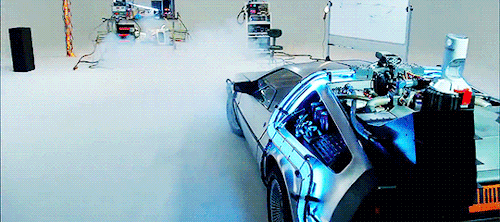15 Years Of Station Told In 15 Gifs
15 Years of Station Told in 15 Gifs
1. International Space Station Assembly Animation

From 1998 to 2011, five different space agencies representing 15 countries assembled the International Space Station, the largest structure ever built in space. Today humans are still living and work in the orbital laboratory. November 2, 2015 marks the 15th anniversary of continuous human presence onboard.
2. Entry of Expedition 1

Expedition 1 crew members including, Commander William Shepherd and Cosmonauts Sergei Krikalev and Yuri Gidzenko arrive to the International Space Station for the first time on November 2, 2000.
3. September 11, 2001

Expedition 3 Commander Frank Culbertson was the only American living off the planet on September 11, 2001. He captured his view of the fateful day from the space station.
4. Kibo

The Japanese Experiment Module, or Kibo, is installed to the space station on June 3, 2008. Kibo means “hope” in Japanese, and it is the largest single space station module.
5. First 6-person Crew

The first 6 person crew on the space station gathers for a press conference in May 29, 2009. Because it was comprised of astronauts from NASA, CSA, ESA, JAXA, and Russia, this was the first and only time all international partners were represented on the space station at the same time.
6. SpaceX Dragon

The space station’s robotic arm captures the SpaceX Dragon during its demonstration flight on May 25, 2012, making it the first commercial vehicle ever to dock with the space station.
7. Olympic Torch

Russian Cosmonauts Sergey Ryanzanskiy and Oleg Kotov bring the Olympic torch outside the space station during a spacewalk on November 9, 2013. The torch traveled to the station as part of the Olympic torch relay ahead of the 2014 Winter Olympics in Sochi, Russia.
8. Testing Fire in Space

Astronaut Reid Weisman captured a floating sphere of fire observed during the Flex-2 experiment on space station on July 18, 2014. The findings may lead to better engines here on Earth.
9. Aurora

Astronaut Reid Weisman’s timelapse of a flickering aurora seen from space station on August 28, 2014.
10. Sunrise

Astronaut Reid Weisman’s timelapse of what a sunrise looks like from the space station on September 23, 2014.
11. Water Bubbles

Astronaut Reid Weisman experiments with water bubbles in space on November 8, 2014.
12. GoPro

Astronauts Terry Virts and Barry “Butch” Wilmore capture the first GoPro footage of a spacewalk on February 25, 2015.
13. Lightning

Astronaut Terry Virts filmed a massive lightning storm over India from the space station on May 9, 2015.
14. Milky Way

Astronaut Terry Virts captured a stunning view of the Milky Way from space station on May 15, 2015.
15. Veggie

Astronauts Scott Kelly, Kjell Lindgren, and Kimiya Yui taste lettuce that had been grown and harvested in space for the very first time on August 10, 2015.
Make sure to follow us on Tumblr for your regular dose of space:http://nasa.tumblr.com
More Posts from Inter-stellxr-blog and Others


Hubble’s Jupiter Maps Reveals Weird Structures
Over a 10 hour period, the Hubble Space Telescope gazed at the solar system’s largest planet to produce one of the most spectacular maps of Jupiter’s complex and dynamic atmosphere. Immediately astronomers were able to measure the size of the planet’s shrinking Great Red Spot and notice some mysterious structures along the way.
As the spot has shrunk, it’s color has also become more anemic, losing some of its redness. Also, as these new Hubble observations show, a strange wispy structure has formed inside the storm, becoming warped by the high-speed winds that have been clocked at a speed of 540 kilometers (335 miles) per hour. Astronomers, so far, have little explanation as to what this feature is or what caused it.
Another oddity has been spied just north of the planet’s equator — a wave-like structure has formed, something that hasn’t been seen since the Voyager 2 flyby in 1979. During that flyby, these waves were assumed to be a transient event and the fact the spacecraft imaged them was a fluke. But they’ve now returned, no doubt sparking some huge interest as to their origins.
Click to learn more

This Week in Chemistry: A liquid with holes in, why spider webs stay sticky, & more! http://goo.gl/vNI6rF






Thanks, Doc





Here’s to all my boys with love handles, stretch marks, ribs that show, who feel they are too big or too small, who feel “unmanly,” who have cellulite, who can’t grow facial hair, who can’t seem to gain weight or lose it, who feel “too short” or wish they looked like a male model. Y'all matter. Love you. 💕


@i-can-taste-the-sun
I CANT STOP LAUGHING

There’s been a rather startling decision today amongst the SETI (search for extraterrestrial intelligence) researchers.
Seth Shostak, senior astronomer at the SETI Institute, announced to his peers at a conference today that it’s time to begin what’s known as ‘active SETI’.
This is when we actively broadcast and effectively ‘alert’ potential neighbors to our presence.
Needless to say, this was a very polarizing conference.
People from Stephen Hawking all the way to science fiction writer David Brin have spoken out against broadcasting our presence into interstellar space.
They both have made comparisons to what happened when industrial civilizations first encountered indigenous peoples. Things never went well for the locals.
David Brin spoke at the conference and said, “The arrogance of shouting into the cosmos without any proper risk assessment defies belief. It is a course that would put our grandchildren at risk.”
I was initially sidelined by the idea. SETI Institute has never broadcasted into space in an attempt to make humanity’s presence obvious to alien observers. I hadn’t therefore really considered the topic much and shared the same worries as David Brin initially.
In my opinion though Dr. Shostak put an end to that worry:
“I don’t see why the aliens would have any incentive to do that.
Beyond that, we have been telling them willy-nilly that we are here for 70 years now. They are not very interesting messages but the early TV broadcasts, the early radio, the radar from the Second World War - all that has leaked off the Earth.
Any society that could come here and ruin our whole day by incinerating the planet already knows we are here.”
The point is if there’s a hostile and capable alien presence nearby, they would already know about us. The technology required to get to Earth even from the nearest star system is far more advanced than anything we can even dream up at the moment. Detecting our presence at that point is a cake walk.
Active SETI, would be a redundant risk as we’re clearly visible to those significantly advanced civilizations already (if there are any). That we’re here at all still suggests there are none.
To any nearby neighbors stuck on their home planets or solar systems, we are now going to be actively broadcasting messages.
The search is on.
Read more about today’s meeting at BBC World News.
(Image credit: ESO)
What Have We Learned About Pluto?
Earlier this year on July 14, our New Horizons spacecraft successfully flew by Pluto. During this encounter, it collected more than 1,200 images of the dwarf planet and tens of gigabits of data. The intensive downlinking of this information began on Sept. 5, and will continue for around a year. With the information being returned for the duration of a year, we still have a lot more to learn about Pluto. Here are a few things we’ve discovered so far:
Pluto’s Heart

An image captured by New Horizons around 16 hours before closest approach displays Pluto’s “heart”. This stunning image of one of the planet’s most dominate features shows us that the heart’s diameter is about the same distance as from Denver to Chicago. This image also showed us that Pluto is a complex world with incredible geological diversity.
Icy Plains

Pluto’s vast icy plain, informally called Sputnik Planum, resembles frozen mud cracks on Earth. It has a broken surface of irregularly-shaped segments, bordered by what appear to be shallow troughs. In other areas, the surface appears to be etched by fields of small pits that may have formed by a process called sublimation, which is when ice turns directly from solid to gas, just as dry ice does on Earth.
Majestic Mountains

Images from the spacecraft display chaotically jumbled mountains that only add to the complexity of Pluto’s geography. The rugged, icy mountains are as tall as 11,000 feet high.
Color Variations

This high-resolution enhanced color view of Pluto combines, blue red and infrared images taken by the New Horizons spacecraft. The surface of the dwarf planet has a remarkable range of subtle color variations. Many landforms have their own distinct colors, telling a complex geological and climatological story of the planet.
Foggy Haze and Blue Atmosphere

Images returned from the New Horizons spacecraft have also revealed that Pluto’s global atmospheric haze has many more layers than scientists realized. The haze even creates a twilight effect that softly illuminates nightside terrain near sunset, which makes them visible to the cameras aboard the spacecraft. Today, a new announcement was made about Pluto’s atmosphere after the most recent image returned from New Horizons showed that Pluto’s hazes are blue. The haze particles themselves are likely gray or red, but they way they scatter blue light has created this tint.
Water Ice

In another finding announced today, New Horizons has detected numerous small, exposed regions of water ice on Pluto. Scientists are eager to understand why water appears exactly where it does, and not in other places.
Stay updated on New Horizons findings by visiting the New Horizons page. You can also keep track of Pluto News on the New Horizons Blog.
Make sure to follow us on Tumblr for your regular dose of space: http://nasa.tumblr.com








Check out these 10 cool facts about Mercury here: http://astronomyisawesome.com/solar-systems/cool-facts-about-mercury/




NASA just released thousands of high-res Apollo mission photos
The space research agency’s Project Apollo Archive made a massive update to its Flickr account Sunday, adding a trove of more than 8,000 photos taken during Moon missions from 1969 to 1972.
-
 odinsblog liked this · 6 months ago
odinsblog liked this · 6 months ago -
 retardedcontrollerreading reblogged this · 8 months ago
retardedcontrollerreading reblogged this · 8 months ago -
 gjnrock liked this · 2 years ago
gjnrock liked this · 2 years ago -
 professormishap liked this · 2 years ago
professormishap liked this · 2 years ago -
 bobv48-blog reblogged this · 4 years ago
bobv48-blog reblogged this · 4 years ago -
 bobv48-blog liked this · 4 years ago
bobv48-blog liked this · 4 years ago -
 headlesssamurai liked this · 5 years ago
headlesssamurai liked this · 5 years ago -
 keylinc liked this · 5 years ago
keylinc liked this · 5 years ago -
 jbrfreitas reblogged this · 5 years ago
jbrfreitas reblogged this · 5 years ago -
 jbrfreitas liked this · 5 years ago
jbrfreitas liked this · 5 years ago -
 rope-doc-13 liked this · 6 years ago
rope-doc-13 liked this · 6 years ago -
 curiousallure reblogged this · 6 years ago
curiousallure reblogged this · 6 years ago -
 curiousallure liked this · 6 years ago
curiousallure liked this · 6 years ago -
 andrew-barrera liked this · 6 years ago
andrew-barrera liked this · 6 years ago -
 the-resident-magical-human liked this · 6 years ago
the-resident-magical-human liked this · 6 years ago -
 fandomsruinedme reblogged this · 6 years ago
fandomsruinedme reblogged this · 6 years ago -
 reallyshadowycollective liked this · 6 years ago
reallyshadowycollective liked this · 6 years ago -
 koryphaee liked this · 6 years ago
koryphaee liked this · 6 years ago -
 zeeseventeen reblogged this · 6 years ago
zeeseventeen reblogged this · 6 years ago -
 russianblue22 liked this · 6 years ago
russianblue22 liked this · 6 years ago -
 astrologyallday reblogged this · 6 years ago
astrologyallday reblogged this · 6 years ago -
 dhruvthestar26 liked this · 6 years ago
dhruvthestar26 liked this · 6 years ago -
 bi6money reblogged this · 6 years ago
bi6money reblogged this · 6 years ago -
 this-is-lightning liked this · 6 years ago
this-is-lightning liked this · 6 years ago -
 bradburymeinfire reblogged this · 6 years ago
bradburymeinfire reblogged this · 6 years ago -
 dakilypia liked this · 6 years ago
dakilypia liked this · 6 years ago -
 hunkpire liked this · 6 years ago
hunkpire liked this · 6 years ago -
 king-of-the-rain-and-wolves reblogged this · 6 years ago
king-of-the-rain-and-wolves reblogged this · 6 years ago -
 king-of-the-rain-and-wolves liked this · 6 years ago
king-of-the-rain-and-wolves liked this · 6 years ago -
 lilwalnut-2019-blog liked this · 6 years ago
lilwalnut-2019-blog liked this · 6 years ago -
 thepizzalovingnerd liked this · 6 years ago
thepizzalovingnerd liked this · 6 years ago -
 buttered-rice1 liked this · 6 years ago
buttered-rice1 liked this · 6 years ago -
 ledantome liked this · 6 years ago
ledantome liked this · 6 years ago -
 ledantome reblogged this · 6 years ago
ledantome reblogged this · 6 years ago -
 starkravingmeh liked this · 6 years ago
starkravingmeh liked this · 6 years ago -
 the956girlfromthe956place reblogged this · 6 years ago
the956girlfromthe956place reblogged this · 6 years ago -
 the956girlfromthe956place liked this · 6 years ago
the956girlfromthe956place liked this · 6 years ago -
 laty0702 liked this · 6 years ago
laty0702 liked this · 6 years ago -
 mandoblando liked this · 6 years ago
mandoblando liked this · 6 years ago -
 abodeglued liked this · 6 years ago
abodeglued liked this · 6 years ago
"I don't know who will read this. I guess someone will find it eventually. Maybe in a hundred years or so." -Mark Watney
174 posts